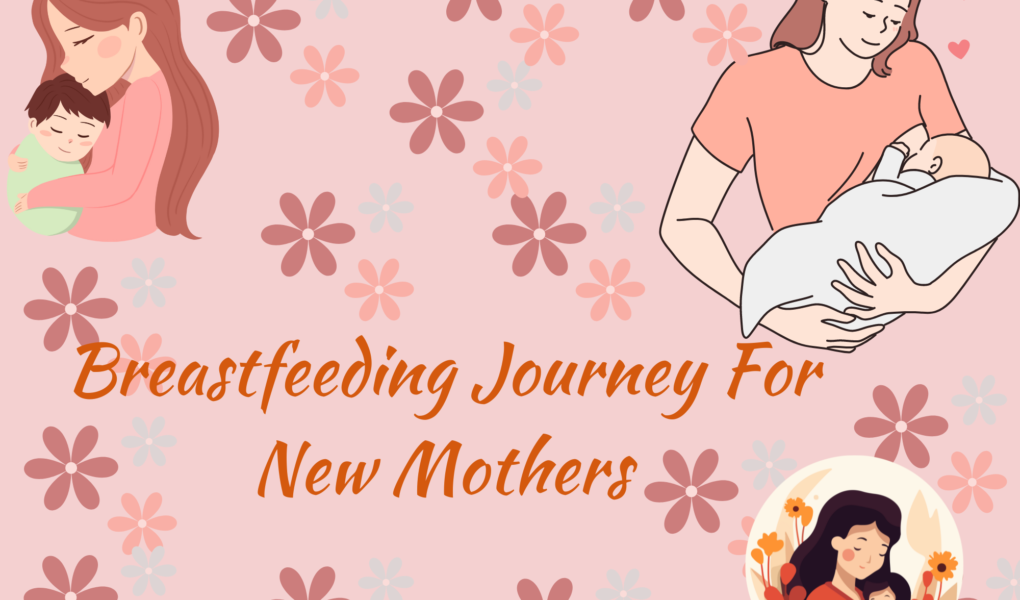Welcome to the extraordinary journey of breastfeeding—an intimate connection between mother and baby that goes beyond nourishment. In this blog post, we’ll explore the emotional and physical aspects of this journey, offering insights and tips for a positive breastfeeding experience.

I have always wanted to breastfeed. However, My body couldn’t produce milk after I gave birth to my child. I had to formula feed. It was a difficult journey. I did take a course from a group in my community before I gave birth. However, I’ve gained so much knowledge, even though I couldn’t breastfeed.
I know some women just naturally produce tons of milk for their baby while some women struggles to produce for their first baby.
These are the few things that I have learned while I was pregnant.
To Prepare to breastfeed for the first time, try talking with women have had positive breast feeding experience. You know probably some. Ask them what it was like and use them as resources.
If you don’t know anyone who can help you can contact a breastfeeding support group in your community.
1. The Early Days:
- Establishing the Bond: Discuss the immediate skin-to-skin contact and its role in fostering a strong connection.
- Benefits for Both: Outline the physical benefits for the baby and the emotional benefits for the mother during the initial breastfeeding sessions.
2. Overcoming Challenges:
- Latch Difficulties: Provide guidance on achieving a proper latch and common issues that might arise.
- Nipple Pain: Offer tips for managing and preventing nipple pain, including proper positioning and seeking support.
3. The Emotional Connection:
- Mother-Baby Bond: Explore the emotional bond that develops through breastfeeding and how it contributes to the baby’s sense of security.
- Empowerment for Mothers: Discuss the empowering feeling mothers experience as they provide nourishment and comfort.
4. Breastfeeding Positions:
- Cradle Hold: Explain the classic cradle hold and its benefits for both mother and baby.
- Football Hold: Discuss alternative positions like the football hold for added comfort and flexibility.
5. Expressing and Storing Milk:
- Breast Pump Tips: Offer insights into using a breast pump efficiently and maintaining milk supply.
- Storage Guidelines: Share guidelines for expressing, storing, and thawing breast milk.
6. Navigating Public Breastfeeding:
- Promoting Awareness: Discuss the importance of normalizing public breastfeeding and share tips for mothers to feel comfortable nursing in various settings.
- Legal Rights: Provide information about legal protections for breastfeeding mothers in public spaces.
7. Weaning and Transitioning:
- Gradual Introduction of Solids: Guide mothers through the process of introducing complementary foods while continuing to breastfeed.
- Emotional Transitions: Discuss the emotional aspects of weaning for both mother and baby and offer support for this transition.
I know that those support groups offer:
- Group information meetings or breastfeeding workshops
- Mentoring by experienced breastfeeding mothers
- Information and support over the phone
Even though we are aware of the benefits of breastfeeding, we are a bit hesitant to breastfeed. Common fears include being unable to breastfeed, not having enough milk, having sore nipples, not being able to eat whatever we want, excluding the father from feeding the baby and having the breast deformed from breastfeeding.
Do not fight yourself with these thoughts and speak to someone who have more knowledge about breastfeeding so that way can have a better understanding how breastfeeding works.
Learning to breastfeed is like learning anything new. You get better little by little, and you will start to feel more confident. Also know that everyone’s breastfeeding experience is different and every baby is unique.
It can often take 4-6 weeks feel comfortable breastfeeding.
Here are 10 tips to make your breastfeeding journey easier.
- Learn about breastfeeding and breast milk before the baby is born.
- Established skin-to-skin contact with your baby as soon he/she born. It will awaken the senses and encourage to take the breast.
- Offer the breast as soon as the baby starts to look for it, ideally in the first hour after birth. Will help get breastfeeding off to a great start.
- Learn to recognize the signs when baby is hungry or satisfied.
- Feed as needed whenever baby is hungry. Frequent feeds stimulate milk production and comfort the baby during this important transition period.
- Room-in with your baby, both day and night. Keep baby nearby so you can get to know each other and can quickly respond to baby’s needs.
- Make sure the baby has a good latch and suction. This helps baby eat well without hurting the mother.
- Avoid skipping feeds, using a pacifier, and giving bottle in the first 4 to 6 weeks. Exclusive breastfeeding (not giving any other kind of milk or food before six months) encourages good milk production and ensures the baby get the full benefits of breast milk.
- Get support and avoid isolation. The support of your partner, a friend or loved one, or a community group can often make things better.
- Trust yourself and enjoy being a parent.
Breastfeeding accessories
There are so many breastfeeding accessories in the market and expensive, everything from breast pumps and nursing pillows to nursing pads and more. Choose the right one for you. We do not need a lot. Community groups are good source of information when the time comes to choose a pump or other breastfeeding accessories.
As you are learning, it’s a good idea to surround yourself with people who can support you and to know who to turn to if you are having trouble.
The breastfeeding journey is a unique and deeply personal experience for both mother and baby. As challenges are overcome and milestones reached, the bond formed during this time becomes an enduring foundation for a lifetime of connection.
Thank you for joining us in celebrating the beautiful and nurturing world of breastfeeding!
